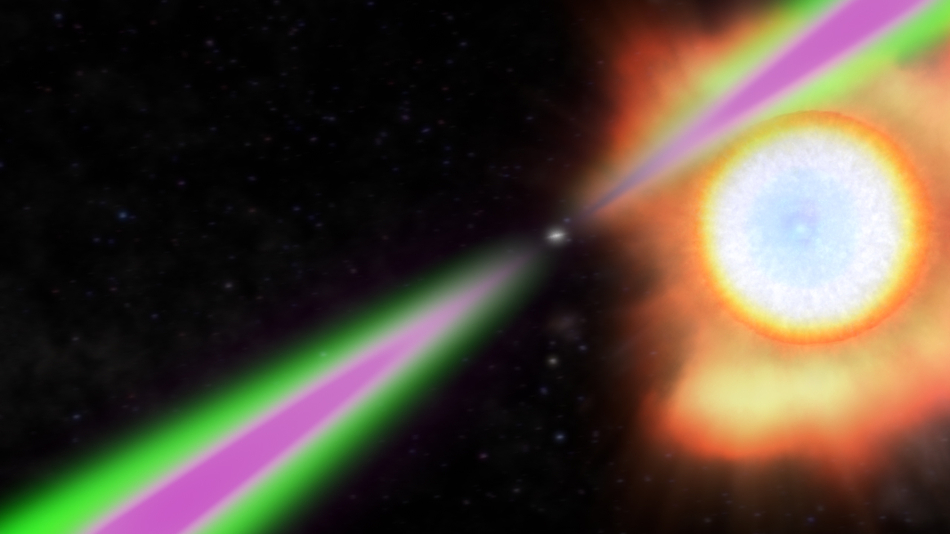
 Credit: NASA's Goddard Space Flight Center
Credit: NASA's Goddard Space Flight Center
Star Blaster
Massive stars live violent lives, and
massive stars in binary star systems can wreak havoc on their companions too. In
a massive binary, the more massive star burns up its nuclear fuel faster than
the less massive star, and then, at the end of its nuclear burning life,
explodes as a supernova,
(sometimes) leaving behind an ultradense neutron star no bigger than the Washington DC beltway now
orbiting the "normal" companion star (if the binary survives the explosion, that
is). Neutron
stars possess extremely strong
magnetic fields which can accelerate charged particles like electrons and
protons to enormous energies in beams directed along the magnetic poles. Neutron
stars also spin rapidly, so the polar particle beams sweep through space in low
energy radio radiation, and high-energy X- and Gamma-rays, doing immense
damage to anything (like a companion star) in its path. One new system, called
PSR J1311-3430, was recently discovered as a pulsing Gamma-ray source by the Fermi Gamma-ray Space Telescope, then
further observations in the optical showed that this pulsar was orbited by a
companion star in a very tight 93-minute orbit no bigger than the orbit of the
moon around the earth. The optical star was strange: extremely hot on one side
and cool on the other. Astronomers realized that the hot side is heated by
high-energy radiation from the companion pulsar. Radio observations showed that
the high level of ionizing radiation from the pulsar strikes the companion and blasts away an
enormous amount of material from it, whittling it down to just
about 12 times the mass of the planet Jupiter. The pulsar itself is one
of the most massive known, indicating that some of the mass lost by the
companion has been accreted by the neutron star. A few other similar systems
have been identified; astronomers call these "black widow" pulsars, since they
kill their companions. What will eventually be left behind? Perhaps eventually
the pulsar will turn its companion into a
diamond
planet.
Published: March 3, 2014
<
HEA Dictionary ● Archive
● Search HEAPOW
● Other Languages
● HEAPOW on Facebook
● Download all Images
● Education ● HEAD
>

Each week the HEASARC
brings you new, exciting and beautiful images from X-ray and Gamma ray
astronomy. Check back each week and be sure to check out the HEAPOW archive!
Page Author: Dr. Michael F. Corcoran
Last modified Monday, 26-Feb-2024 17:20:42 EST


